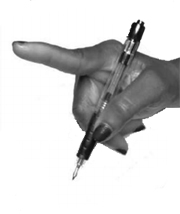Dystonia syndromes have a remarkable degree of phenotypic variability with frequent overlap among different syndromes. There is no pathognomonic presentation that allows for reliable clinical-etiological correlations, either for genetic or for environmental forms1.
While identifying a specific form of dystonia solely on clinical grounds is often difficult if not impossible, careful observation of the phenotypic expression of the dystonia itself, of any associated features and ‘‘red flags,’’ and of the disease course, may provide helpful hints with respect to the correct classification of the dystonia, which is the first and critical step toward establishing its aetiology2.
As the number of dystonia syndromes and recognized aetiologies has grown, the diagnostic approach has become increasingly challenging. A “shotgun” approach that involves testing for all potential disorders is usually not suitable, although with next-generation sequencing techniques, this may prove to be the most efficient and practial method for many cases.
Diagnostic testing can be guided by a strategy that involves a syndromic approach3,4. Briefly, the syndromic approach involves classifying patients according to accompanying clinical features and tailoring the diagnostic studies to that syndrome5.
In view of these limitations of traditional strategies for laboratory investigations, there is a growing trend toward the greater use of broad dystonia gene panels or whole exome sequencing. The red flags and syndromic strategies are useful only when the clinical clues point specifically to a single or small number of potential diagnoses to target. Serial genetic testing, starting with the most likely genes, should be avoided because it is frustrating and more expensive than ordering a larger panel. If a dystonia gene panel is used, it is important to know what it covers. Gene panels are not standardized across testing laboratories. Some include as few as 12 genes, whereas others include more than 100, often at the same cost. Even for large panels, current costs are typically significantly cheaper than brain MRI6.

